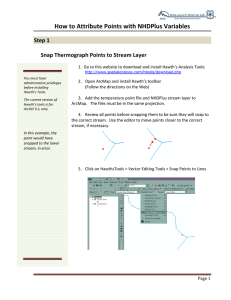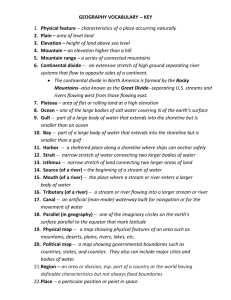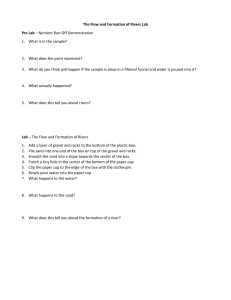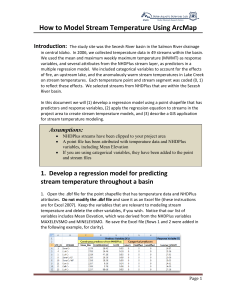How to Join Elevation, Contributing Area, and Slope Introduction
advertisement
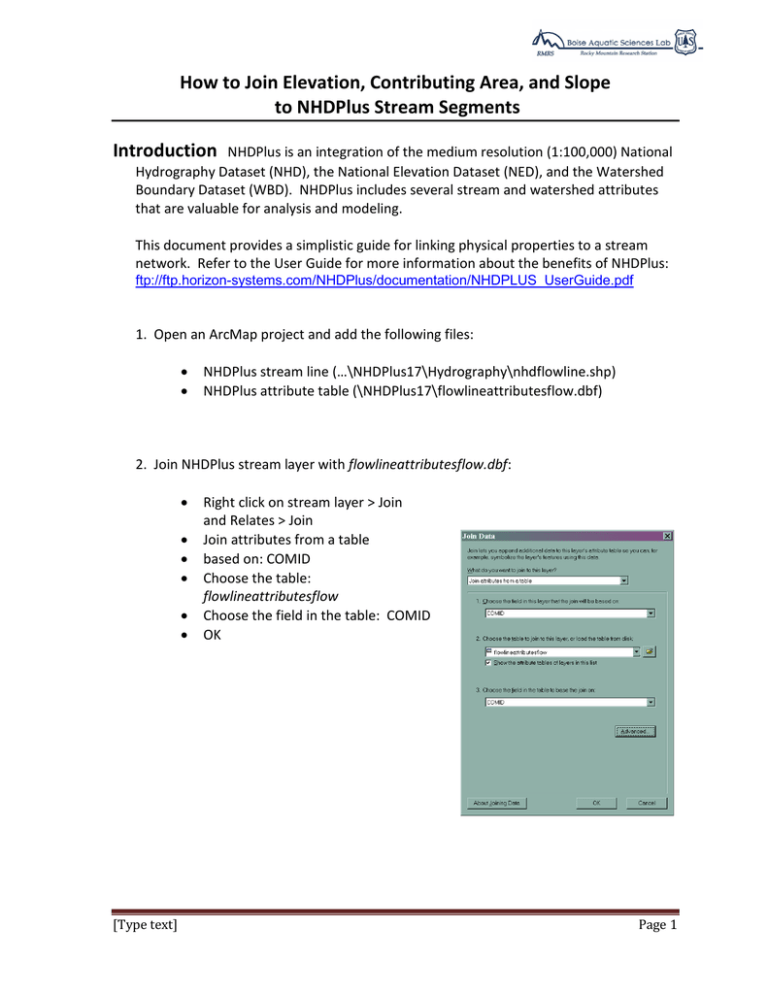
How to Join Elevation, Contributing Area, and Slope to NHDPlus Stream Segments Introduction NHDPlus is an integration of the medium resolution (1:100,000) National Hydrography Dataset (NHD), the National Elevation Dataset (NED), and the Watershed Boundary Dataset (WBD). NHDPlus includes several stream and watershed attributes that are valuable for analysis and modeling. This document provides a simplistic guide for linking physical properties to a stream network. Refer to the User Guide for more information about the benefits of NHDPlus: ftp://ftp.horizon-systems.com/NHDPlus/documentation/NHDPLUS_UserGuide.pdf 1. Open an ArcMap project and add the following files: • • NHDPlus stream line (…\NHDPlus17\Hydrography\nhdflowline.shp) NHDPlus attribute table (\NHDPlus17\flowlineattributesflow.dbf) 2. Join NHDPlus stream layer with flowlineattributesflow.dbf: • • • • • • [Type text] Right click on stream layer > Join and Relates > Join Join attributes from a table based on: COMID Choose the table: flowlineattributesflow Choose the field in the table: COMID OK Page 1 How to Join Elevation, Contributing Area, and Slope to NHDPlus Stream Segments 3. Select a stream segment, or open the shapefile attribute table, to view the list of attributes by stream. The attributes for Ruby Creek are shown in the following table. There are 2 sources of data in the table, the nhdflowline and flowlineattributesflow. Each attribute is preceded by the name of the source of the data. nhdflowline provides stream name (GNIS_NAME) and stream length (LENGTHKM). flowlineattributesflow table has several attributes including: • Cumulative Drainage Area (km2) o CUMDRAINAG: drainage area that has accumulated at the bottom of the stream segment • Elevation (m) o MAXELEVSMO: elevation at the upstream end of the stream segment, o MINELEVSMO: elevation at the downstream end, o MAXELEVRAW: unsmoothed1 elevation at the upstream end, o MINELEVRAW: unsmoothed1 elevation at the downstream end • Slope (m/m) o SLOPE: the slope of the stream segment 1 NHDPlus User Guide recommends using smoothed (…SMO) elevations, vs. raw (…RAW) elevations, to ensure there are no negative values. NHDPlus does not provide Mean Elevation, but we recommend creating it using MAXELEVSMO and MINELEVSMO. Page 2

